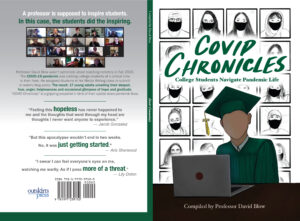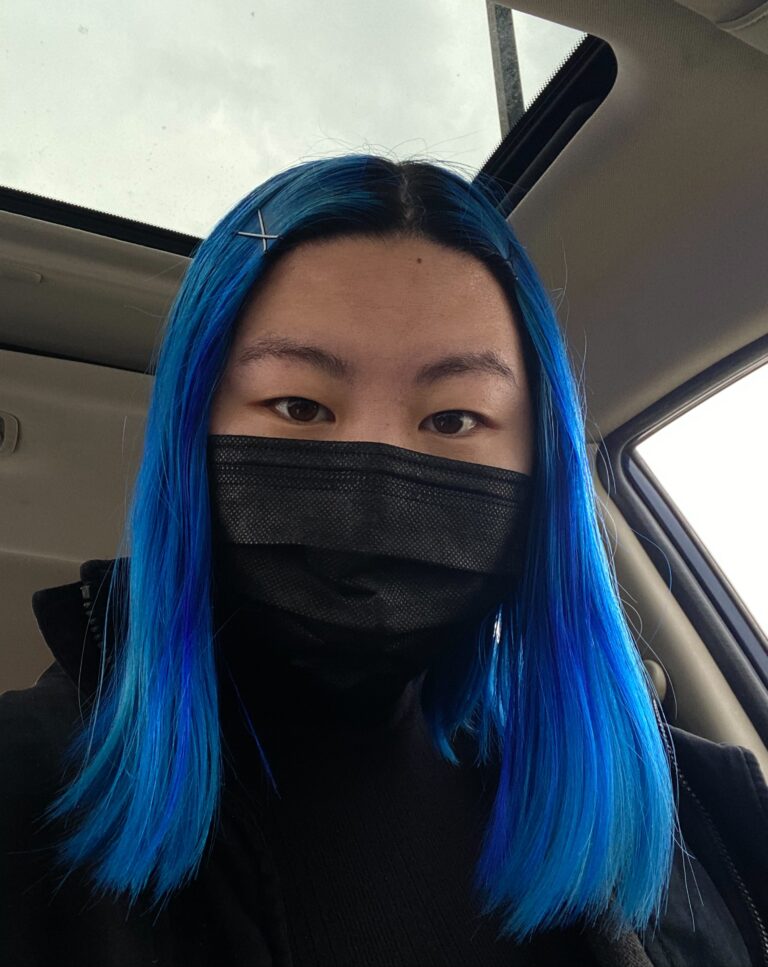CU Media Writing class composes book

During the Fall 2020 semester, professor David Blow’s Media Writing students wrote COVID Chronicles blogs, which are now being sold as a book.
Blow created the biweekly blog assignment for his students when he was dreading teaching a full semester online due to the pandemic. The students were able to vent their frustrations, offer support, and share the good times and bad with each other through this assignment –
despite only getting to see each other over zoom.
The professor, beyond impressed by his student’s work, decided to share it with the world and self-publish these stories in a book.
“I was trying to think of an assignment that would be … somewhat inspiring to do,” he said regarding his mid-pandemic planning for the teaching. “I felt bad for all of these students and what they were missing.”
Each student brought something different to the table, from stories detailing struggles with depression, to getting married during a pandemic, to observations of racial injustices.
Aris Sherwood, a student in the class, described the assignment initially feeling, “like when a TV show writes in COVID into their plot line.”
Aris’ take on the assignment was chronological, spanning the first few months of the pandemic.
“I had to force myself to think about my own feelings in each month… Before, I was just kind of floating along, but by writing, I was able to recognize my thoughts and feelings about everything.”
Another student, Marty Kelly, felt that his views on the pandemic had changed after the assignment.
He wrote of the struggles of sports and small businesses in the pandemic. After reading his classmate’s stories, his views on the pandemic changed.
“A lot of people were worse off in a lot of ways than some of the people and situations I wrote about,” he said.
In addition to the pandemic, issues involving politics, the past presidential election and racial injustices against Asian Americans and Pacific Islanders also surfaced in the blogs, as did the Black Lives Matter movement.
Blow in a recent interview noted it was, “an imperfect storm.”
Lily Doton, another student of the class who is featured in the first chapter, reflected on the assignment.
“I’ve really struggled seeing everything that’s going on in other parts of the country, … but I wrote about those feelings … and that’s helped me cope with it,” she said.
As a student, reader of fellow students’ chronicles, and writer for the paper, Sherwood noted that during this past year in the pandemic, “If there’s anything I can do as a white, cis, able-bodied human, at least I can write, share people’s stories, and help give them a voice.”
This assignment also allowed CU students to learn about each other’s lives, as the assignment required them to give feedback on each other’s work.
“It was a way for us as individuals to create some kind of connection with the rest of our community by sharing common or uncommon experiences,” said Aurora Calchera, another student in the Media Writing class.
Students said having their stories published also offers some historical value on top of the relatability to other college students.
“It’s definitely a little nerve wracking, … but overall exciting, knowing that people can relate or learn,” Sherwood said.
Another COVID Chronicles writer, Adrianna Maher, praised the assignment and what it provided.
“My time at home and perspective of the world during the pandemic is immortalized in the book. Not only were the pieces a great writing exercise but provide documentation to look back on,” she said.
“COVID Chronicles: College Students Navigate Pandemic Life,” with cover art and designs by student Jasmin Gomez Glens Falls, New York native Anthony Richichi and edited by former CU adjunct professor Rhonda Triller, is available to order on Amazon and Barnes & Noble and will be in area stores soon.







